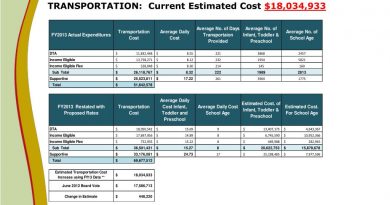Lock-Up Option What It is How It Works

Contents
- 1 Lock-Up Option: What It is, How It Works
- 1.1 What Is a Lock-Up Option?
- 1.2 Understanding a Lock-Up Option
- 1.3 Lock-Up Options and Hostile Takeovers
- 1.4 Example of a Lock-Up Option
- 1.5 Are Hostile Takeovers Legal?
- 1.6 What Are the Tactics of Hostile Takeovers?
- 1.7 Who Benefits From a Hostile Takeover?
- 1.8 What Is an Example of a Lock-Up Option?
- 1.9 The Bottom Line
Lock-Up Option: What It is, How It Works
What Is a Lock-Up Option?
A lock-up option is a stock option offered by a target company to a white knight for additional equity or the purchase of a portion of the company. The lock-up option is also called a lock-up defense. In risk arbitrage, it may be called "shark repellent."
Key Takeaways
- A lock-up option is a contract that favors a friendly company in a takeover battle by promising it some of the target company’s shares or best assets.
- Lock-up options are not subject to rules or regulations beyond basic contract law.
- Lock-up options were used mainly in the 1980s and early 1990s when hostile takeovers were more common and corporate raiders targeted sprawling, inefficient companies.
Understanding a Lock-Up Option
The purpose of a lock-up option is to ward off a hostile takeover attempt, and the holder of the option is not free to sell the stock to any party other than those designated by the target company. Shares of the target company’s stock or other attractive assets are effectively locked up through the contractual option.
A lock-up option is granted to a friendly suitor or savior helping to thwart the attempts made by a hostile acquirer. The option is designed to make the target company less attractive for a hostile takeover by taking a large percentage of stock out of play. Lock-up options may also be used to take some of the target company’s major and most desirable assets out of play, such as a profitable business line or valuable property.
Through the lock-up option, these assets are made available to the friendly suitor—the white knight—if that company does not win the merger; however, it also compensates the white knights for making those bids, with the option serving as a breakup or termination fee.
The favorable conditions of the stock or asset sale made available through the lock-up option only happen if the white knight does not win the merger bid.
Lock-up options are contractual but not in the same category as derivative financial options, so they are not subject to the same rules and regulations as trading instruments.
A lock-up option or defense should not be confused with a lock-up provision, which prevents a firm’s shareholders from selling or transferring their shares during a defined period after acquiring them. This is typically implemented with employee stock grants after an initial public offering (IPO) or other incentive awards.
Lock-Up Options and Hostile Takeovers
Lock-up options are often considered a type of poison pill in that they attempt to make the target company less attractive to suitors. A poison pill is a blanket term for tactics utilized by companies to prevent or discourage hostile takeovers. A company targeted for a takeover uses a poison pill strategy to make shares of the company’s stock unfavorable to the acquiring firm.
When hostile takeovers were a real threat in the 1980s, conglomerates began building defenses to avoid raiders. Unfortunately, the focus on defense sometimes led the companies to make poor business decisions, damaging the balance sheet but avoiding a takeover.
Although there are examples in both extremes, the separation of conglomerates into smaller, more focused companies was generally a positive development for their investors. Today, companies are less likely to use lock-up options or worry about raiders trying to break them up. This is because they are the survivors of the 1980s and have taken lessons about focus and shareholder value to heart.
Example of a Lock-Up Option
In 1993, Viacom and QVC Network were both in competition against one another to acquire Paramount Communications. Paramount provided Viacom with a lock-up option that gave Viacom the right to purchase 24 million treasury shares at the per-share acquisition price, which was negotiated. Paramount had 124 million outstanding treasury shares at the time.
The lock-up option would have allowed Viacom to sell the shares to QVC in the event that QVC was able to acquire Paramount, which would have increased the acquisition cost for QVC. The goal was to make the acquisition of Paramount less appealing to QVC. QVC challenged the lock-up option in court, and the Delaware Supreme Court invalidated the lock-up option. In the end, Viacom ended up buying Paramount, regardless.
Are Hostile Takeovers Legal?
Yes, hostile takeovers are legal because the methods by which they are done are allowed under the law. That being said, the legality and methods of some companies or investors can be questioned, which may prevent a hostile takeover from moving forward.
What Are the Tactics of Hostile Takeovers?
The main tactics of hostile takeovers are to make a tender offer, to buy up shares to gain majority control, and a proxy fight.
Who Benefits From a Hostile Takeover?
The company being acquired typically benefits from a hostile takeover, specifically in that its share price is likely to rise. Hostile takeovers can be damaging to both companies if not implemented and managed correctly.
What Is an Example of a Lock-Up Option?
An example would be if Company ABC is concerned that Company XYZ will purchase it. As a precautionary measure, ABC grants a friendly company, Company DEF, a lock-up option, stating that if XYZ purchases more than 50% of ABC, then DEF has the right to purchase 15% of ABC at a predetermined price. If XYZ wanted to continue purchasing ABC, it would have to buy the 15% of shares from DEF, which would make the purchase more expensive and less appealing for XYZ, hopefully deterring it from purchasing ABC.
The Bottom Line
Lock-up options are issued to protect companies from hostile takeovers and are one of many strategies used to prevent such an acquisition. They are not always beneficial to the company, so they should always be used with caution.



